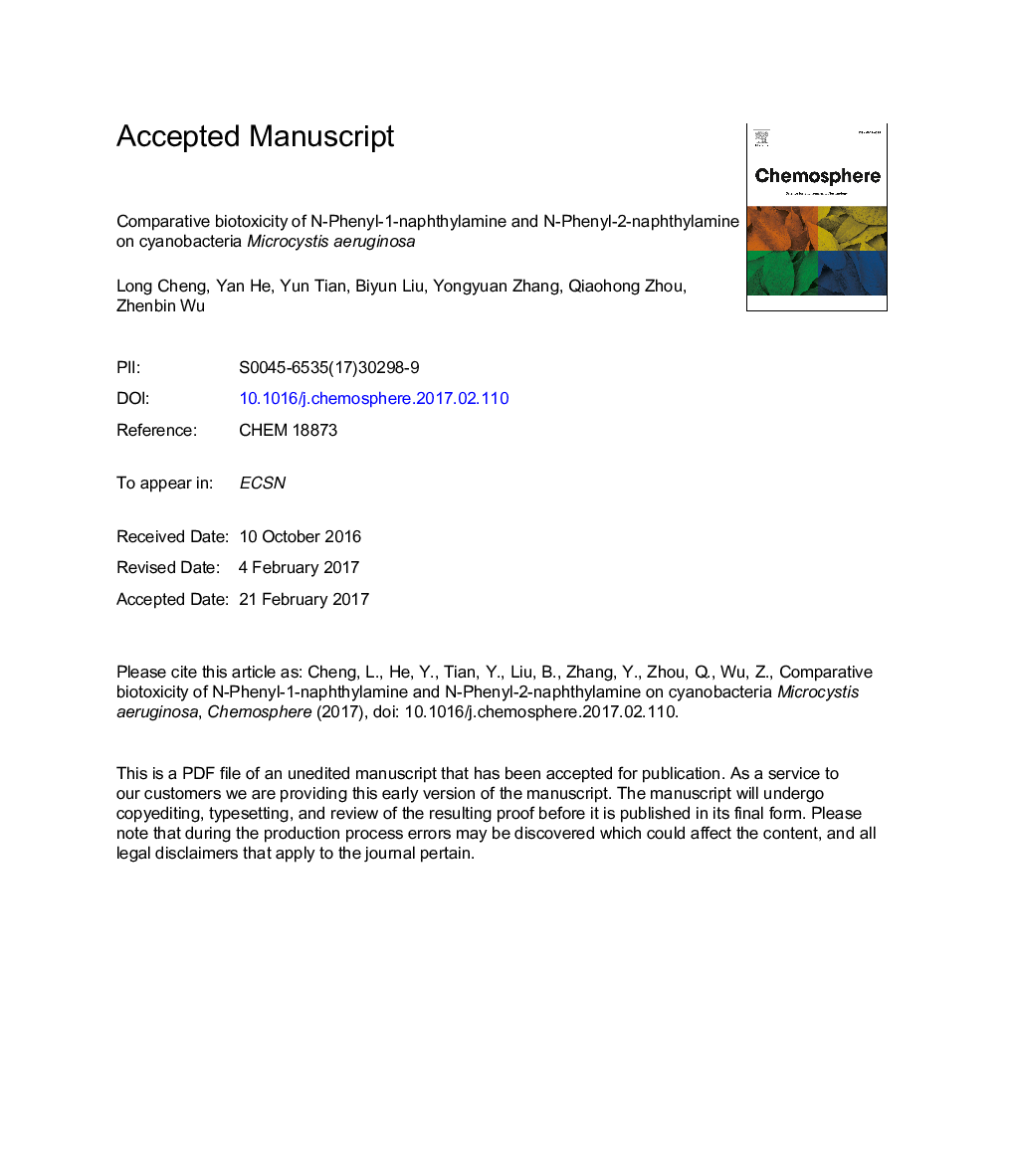| Article ID | Journal | Published Year | Pages | File Type |
|---|---|---|---|---|
| 5746854 | Chemosphere | 2017 | 43 Pages |
Abstract
N-Phenyl-1-naphthylamine (P1NA) and N-Phenyl-2-naphthylamine (P2NA) are both widely used as antioxidant and plant secondary metabolites. In this study, growth, esterase, photosynthetic activity and cell membrane integrity were used as biomarkers to compare biotoxicity of P1NA and P2NA on Microcystis aeruginosa. According to the results, a dose-response relationship was observed only between P1NA concentrations and growth inhibition. The EC50 (48 h) of P1NA calculated from growth inhibition was 16.62 μM, while that of P2NA was not detected. When the esterase and photosynthetic activity were applied to evaluate the biotoxicity, it was found that a concentration of 20 μM P1NA, P2NA caused reduction of esterase activity and Fv/Fm of M. aeruginosa to 22.2 and 3.3%, 97.5 and 92.1%, respectively, after 48 h exposure. The percentage of membrane-damaged cells was increased as P1NA exposure concentration increased, but that was not detected when exposure to P2NA. The difference substituted position in the molecular structure of P1NA and P2NA leads to different toxicological properties and only P1NA was found highly toxic to M. aeruginosa. The toxicity is due to that only P1NA can be biotransformed to 1,4-naphthoquinone, which could induce overproduction of intracellular ROS as well as result in oxidative damage and growth inhibition of test organism.
Related Topics
Life Sciences
Environmental Science
Environmental Chemistry
Authors
Long Cheng, Yan He, Yun Tian, Biyun Liu, Yongyuan Zhang, Qiaohong Zhou, Zhenbin Wu,
